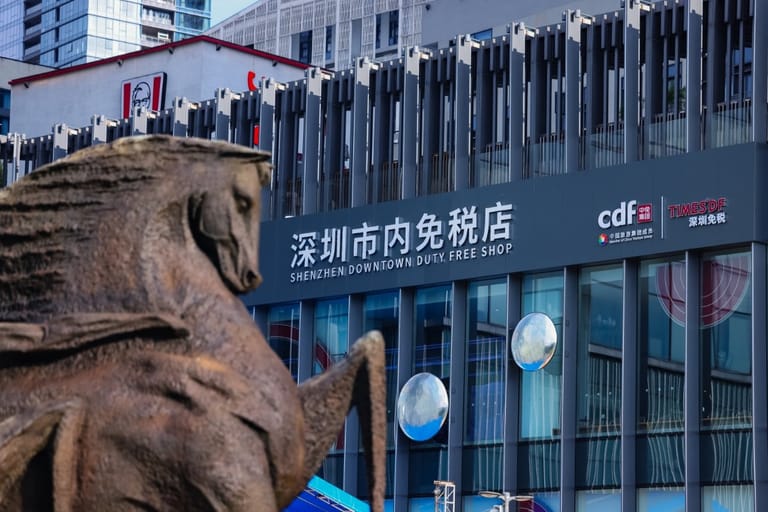Monday Briefing: China’s Consumption Rebounds, Luxury Falters, and Swiss Watches Stall
By
Wenzhuo Wu

Published on
April 28, 2025

Start your week with sharp analysis and fresh insights into China’s latest cultural, luxury, and consumer trends. Monday Briefing connects the dots between local shifts and global repercussions, highlighting relevance to the luxury market, business strategies, and modern lifestyle trends shaping our world today.
After a tepid 2024, early 2025 signals a tentative turning point for China’s consumer economy. Official Q1 data paints a modest but broad-based recovery across services, e-commerce, and inbound travel. Yet the landscape remains fracturedfor global luxury brands caught between post-pandemic recalibration, weakening discretionary demand, and geopolitical headwinds. As Beijing accelerates pro-consumption measures across major provinces, the question is no longer whether China’s consumers are spending, but where, on what, and how fast brands can adapt.
China’s Selective Consumption Recovery
In the face of softening global sentiment, China’s first-quarter consumption data tells a nuanced story. Retail services are leading the rebound, with services-related retail up 5 percent year-on-year, outpacing goods retail. Spending on travel, education, and entertainment posted double-digit growth per capita, and restaurant revenue grew 4.7 percent, accelerating from January and February.
One area showing outsized potential: inbound tourism. Foreign arrivals to China rose 40.2 percent year-on-year through March, driven by policies such as the 240-hour visa-free transit initiative, which accounted for over 70 percent of entries. While volumes remain below 2019 levels, the upward momentum is clear. Cities like Shanghai are responding by investing in inbound-friendly experiences to convert tourists into luxury shoppers. For brands and retailers, airport zones, downtown duty-free hubs, and high-traffic cultural sites are becoming increasingly strategic.
Meanwhile, e-commerce continues to be a critical growth engine, with online retail sales up 7.9 percent. Physical goods sold online now account for nearly a quarter of retail sales. This signals growing digital fluency and the role of livestreaming, social commerce, and recommendation algorithms in converting demand, especially across younger and lower-tier city demographics.

China’s rebound may not be broad-based, but the pocketbooks of Chinese consumers are beginning to nudge open. The challenge for brands is less about waiting for a full recovery and more about seizing the micro-moments where demand is already returning.
Luxury’s China Puzzle Gets More Complicated
Q1 earnings from global luxury players reveal that China’s appetite for high-end fashion and accessories remainsselective. Kering reported a painful 14 percent drop in group revenue, led by a 25 percent plunge at Gucci. Bottega Veneta edged up 4 percent, but the group’s overall results reflect both soft sentiment and brand-specific challenges in Asia.
Valentino also posted a 2 percent revenue decline at constant exchange rates in 2024. While direct retail saw a modest 5 percent bump, Asia remained flat. Bright spots included its fragrance and e-commerce lines—up a staggering 51 percent and 37 percent,respectively—suggesting that product adjacencies and digital retail are helping to offset headwinds in traditional channels.
Swiss Watches Feel the Strain
Swiss watch exports posted a modest 1.5 percent increase in value in March, reaching 2.1 billion Swiss francs, even as global shipment volumes fell by 4.8 percent. Yet beneath the surface, market divergence remains stark. The United States surged ahead with 13.7 percent growth, while Japan and the UK also posted gains of 1.1 percent and 10.6 percent, respectively.
In Greater China, however, the picture remains subdued. Exports to mainland China declined by 11.5 percent, and Hong Kong dropped by 11.3 percent—but both saw their rates of decline ease compared to previous months. While this deceleration may offer a glimmer of hope, analysts remain cautious. As Bernstein’s Luca Solca points out, “We believe this uncertainty will weigh on a recovery, not only from the first-order impact of tariffs on Swiss exports into the US but also on the ripple effect on global currencies and consumer feel-good.”
The senior analyst covering global luxury goods believes top-tier names like Rolex, Cartier, and Patek Philippe are maintaining “top-of-mind” status among consumers. For mid-tier and legacy brands, the challenge is twofold—an ongoing macro drag and the shift in consumer mindset from conspicuous consumption to value-driven, culturally attuned purchasing.

This erosion of demand suggests that cyclical headwinds are giving way to structural recalibrations in the luxury timepiece space. For watchmakers, it’s no longer enough to rely on legacy appeal or old narratives of status. China’s affluent buyers are asking for more—and voting with their wallets.
Bottom Line
Looking ahead, China is expected to double down on stimulating domestic consumption—not only as a buffer against global uncertainty, but also as a strategic response to looming trade frictions and tariff threats, especially from the US and EU. Local governments are already rolling out policies to boost spending, from consumption vouchers and “shopping festivals” to tax incentives for cross-border e-commerce and digital infrastructure upgrades.
For luxury brands navigating sluggish sales, these programs present real opportunities. By aligning with regional retail activations, investing in experiential campaigns in key commercial hubs, or partnering with state-backed tourism and cultural platforms, brands can deepen their local footprint while riding on policy tailwinds.
In 2025, precision—not scale—is the name of the game. Winning in China will require more than just market presence—it will demand nimble localization, policy fluency, and the ability to tap into government-backed levers of growth.












